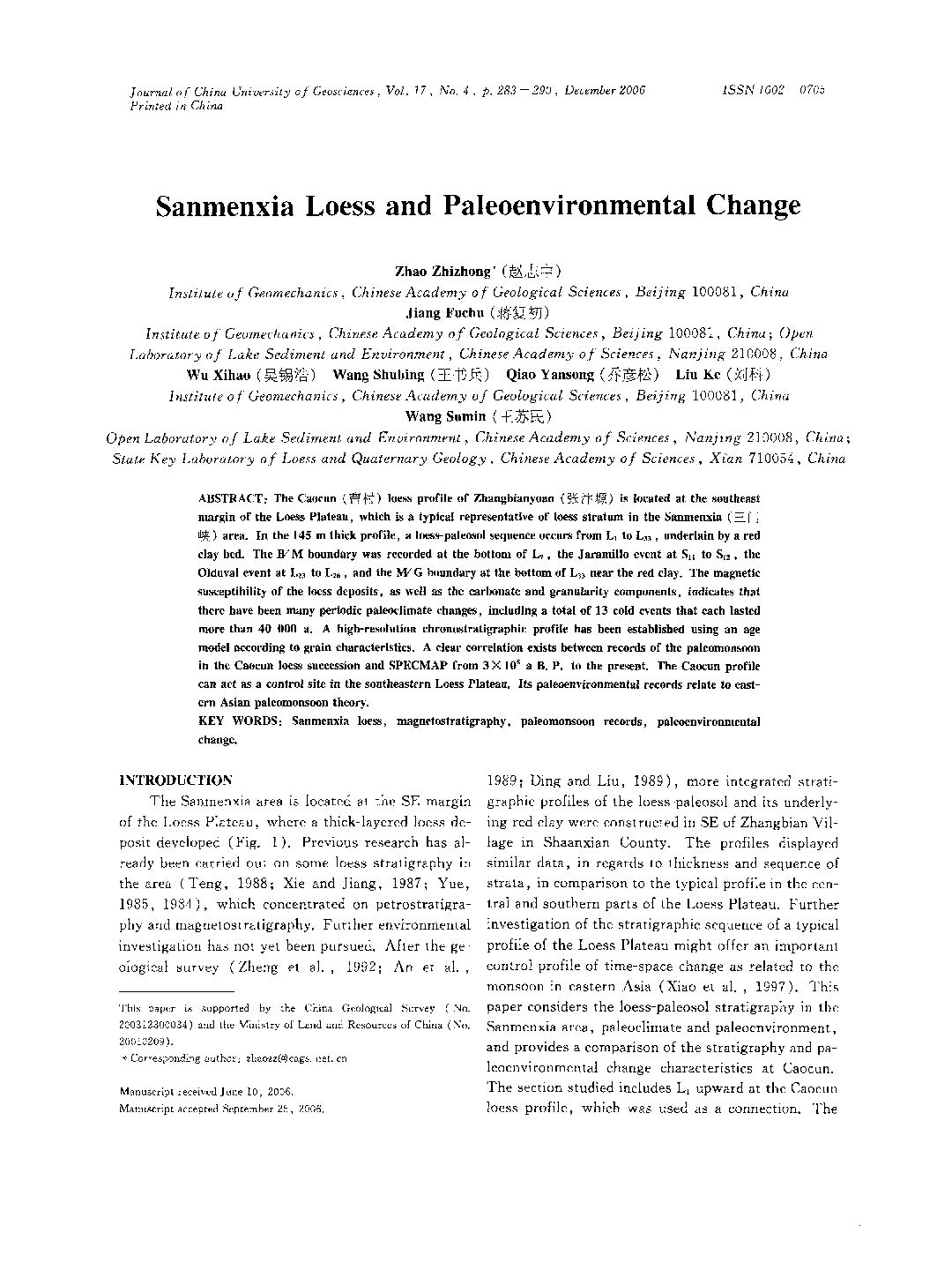| Article ID | Journal | Published Year | Pages | File Type |
|---|---|---|---|---|
| 4687853 | Journal of China University of Geosciences | 2006 | 8 Pages |
Abstract
The Caocun () loess profile of Zhangbianyuan () is located at the southeast margin of the Loess Plateau, which is a typical representative of loess stratum in the Sanmenxia () area. In the 145 m thick profile, a loess-paleosol sequence occurs from L1 to L33, underlain by a red clay bed. The B/M boundary was recorded at the bottom of L7, the Jaramillo event at S11 to S12, the Olduval event at L23 to L26, and the M/G boundary at the bottom of L33 near the red clay. The magnetic susceptibility of the loess deposits, as well as the carbonate and granularity components, indicates that there have been many periodic paleoclimate changes, including a total of 13 cold events that each lasted more than 40 000 a. A high-resolution chronostratigraphic profile has been established using an age model according to grain characteristics. A clear correlation exists between records of the paleomonsoon in the Caocun loess succession and SPECMAP from 3X105 a B. P. to the present. The Caocun profile can act as a control site in the southeastern Loess Plateau. Its paleoenvironmental records relate to eastern Asian paleomonsoon theory.
Related Topics
Physical Sciences and Engineering
Earth and Planetary Sciences
Earth-Surface Processes
Authors
Zhao Zhizhong, Jiang Fuchu, Wu Xihao, Wang Shubing, Qiao Yansong, Liu Ke, Wang Sumin,
